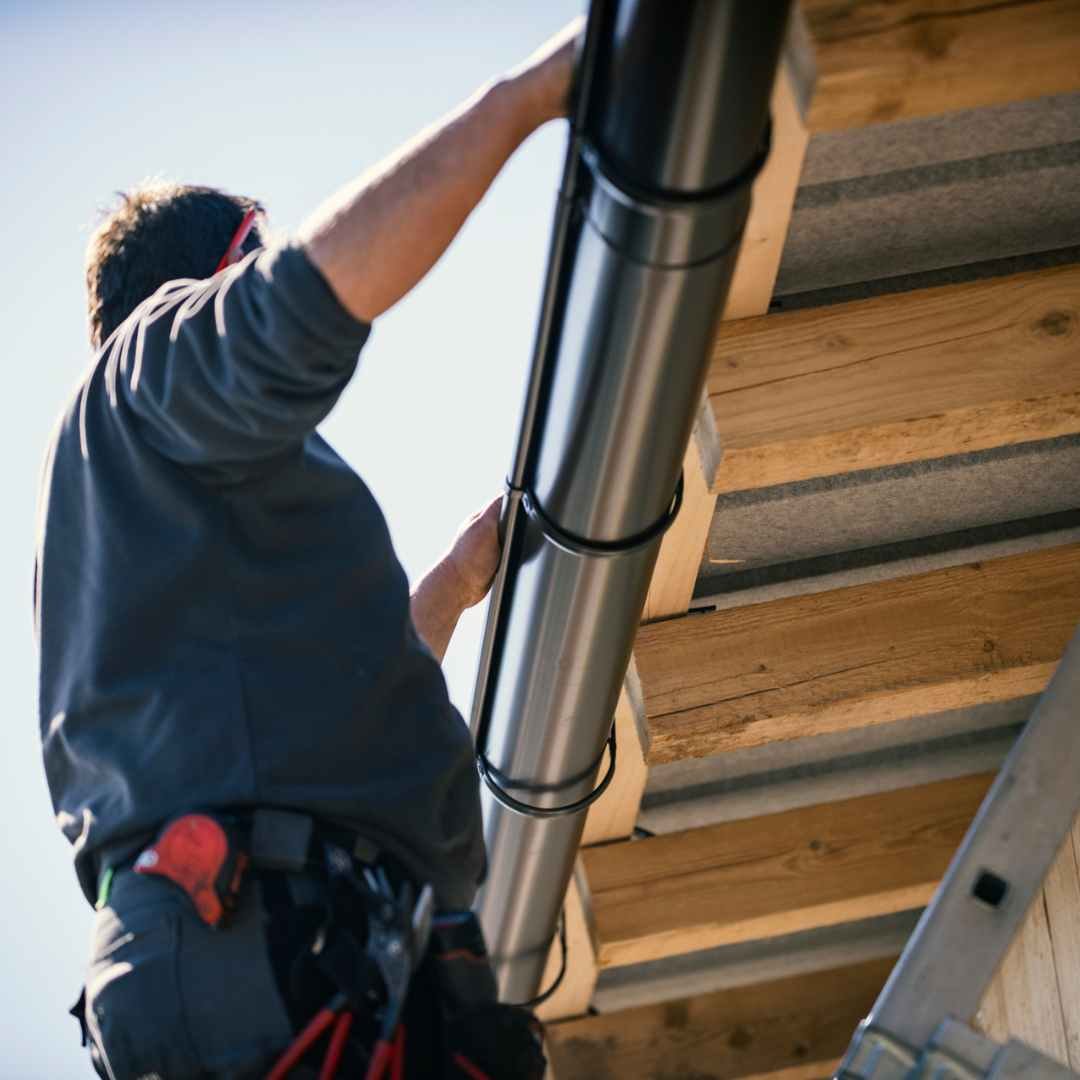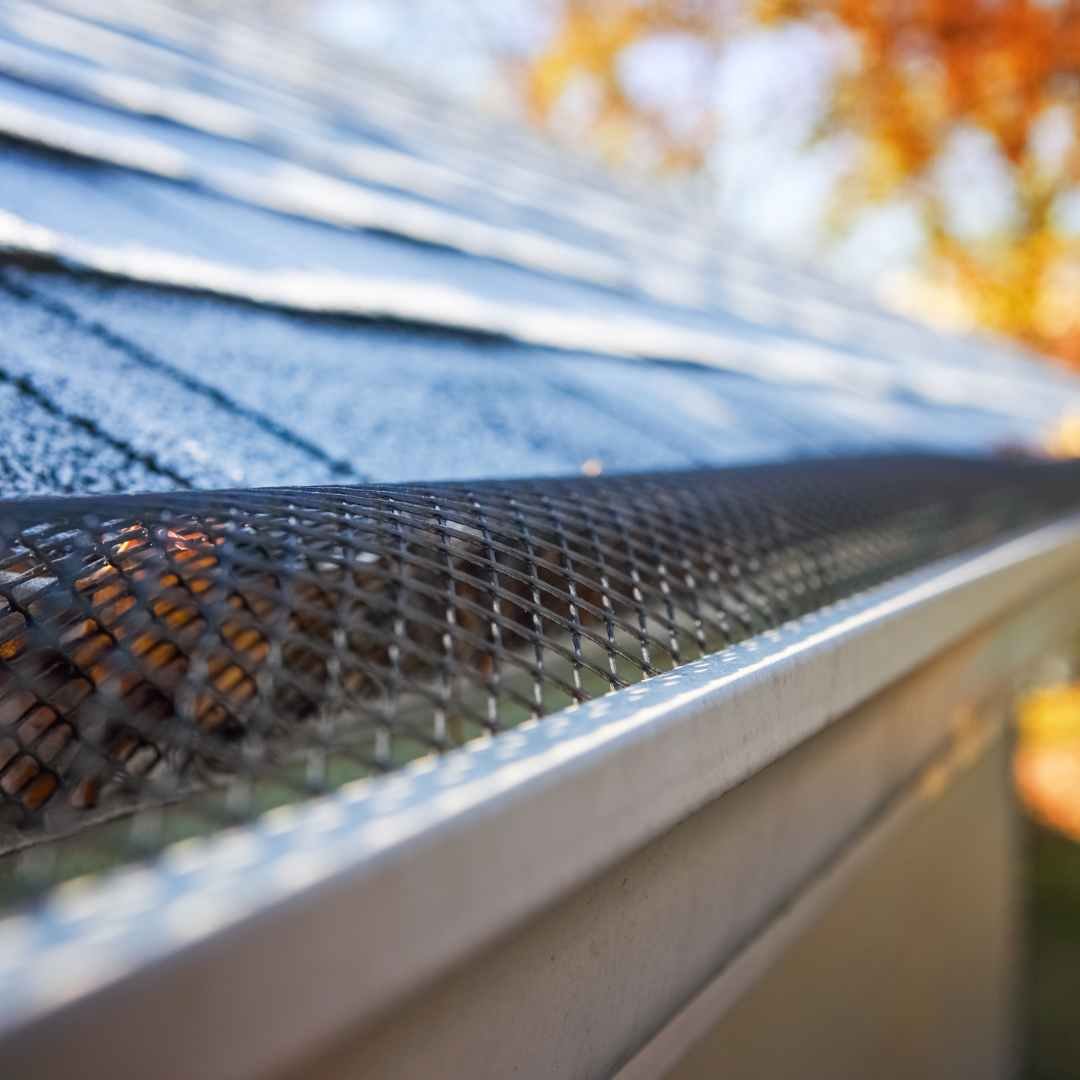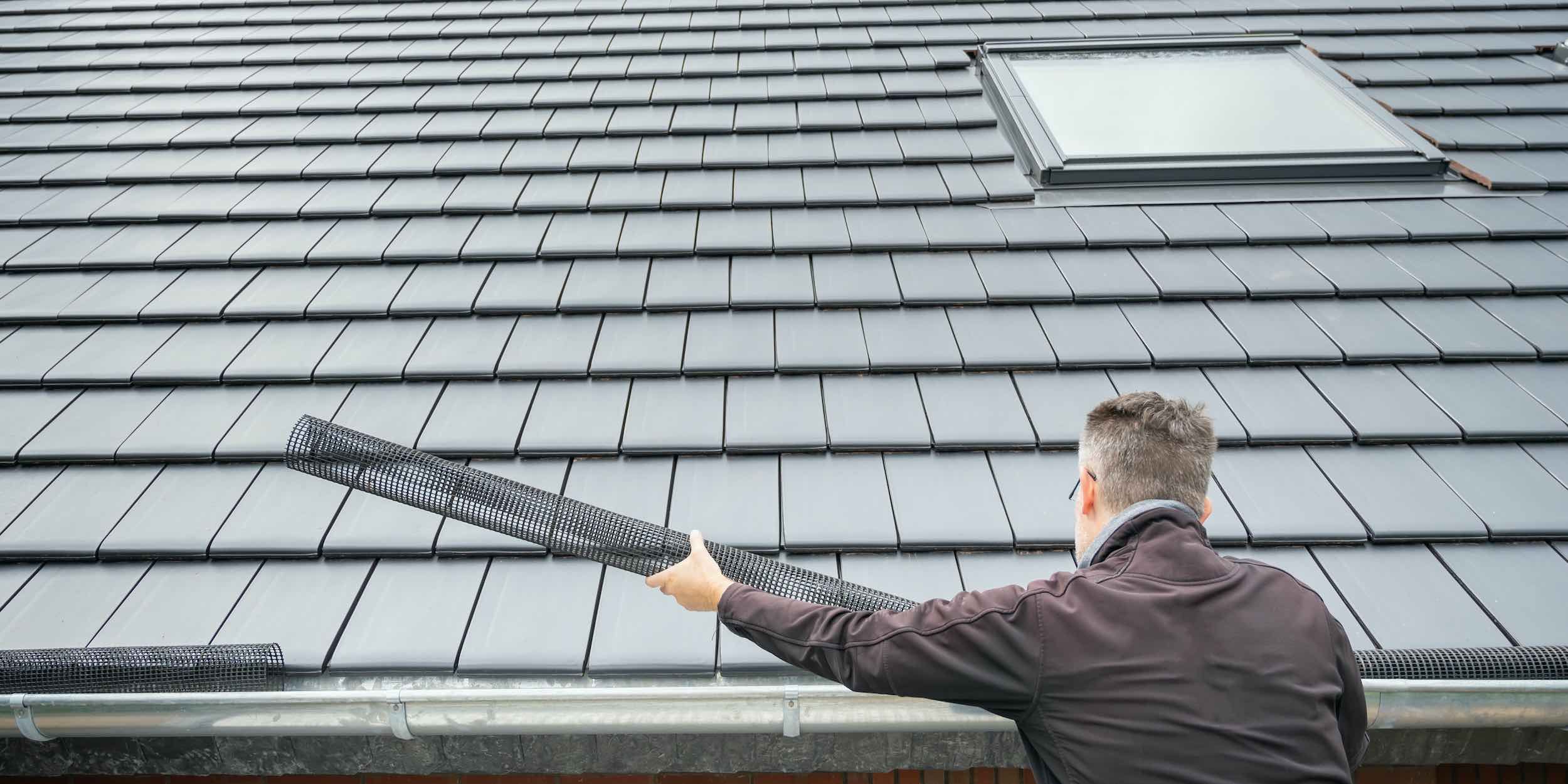
Best Gutter Guard & Gutter Cover Installation Experts
Never Clear Clogged Rain Gutters Again
Gutter guards play a crucial role in maintaining the functionality and efficiency of a rain gutter system. They are designed to prevent debris such as leaves, twigs, and other unwanted materials from entering and clogging the gutters or downspout. By choosing gutter guards as your next home improvement project, you can eliminate the need for frequent gutter cleaning and protect their gutters from damage caused by clogs.
What are Gutter Guards and Why are They Important?
Gutter guards, also known as gutter covers or gutter screens, are devices that fit over or inside your existing gutter system to filter out debris such as leaves, pine needles, and twigs. They allow water to flow into the gutter while stopping debris from clogging the system and downspout.
Without gutter protection, your gutters can become clogged, creating roof and fascia mold, and preventing rainwater from flowing away from your roof and home. This can lead to various problems, including water damage to your home's foundation, landscape erosion, basement flooding, and damage to the gutter system itself.
Ready to explore pricing? We can help, click below for a free no-obligation quote.
Gutter Guard Types to Consider
There are several types of gutter guards available on the market, each with its own pros and cons. Here's a look at some of the most common gutter protection solutions:
-

Mesh Gutter Guards
Mesh gutter guards are sheets of metal or plastic that snap onto your existing gutter. They have tiny holes that allow water to pass through while filtering out debris. Mesh gutter guards are effective at preventing leaves and larger debris from entering the gutter, but smaller debris like pine needles and shingle grit can still get through the holes.
Pros of mesh gutter guards include their effectiveness at blocking large debris and their relatively low cost. Cons include the potential for smaller debris to get through the holes and the need for regular cleaning to remove debris from the surface of the guard.
-

Micro-Mesh Gutter Guards
Micro-mesh gutter guards are similar to regular mesh guards, but the holes in the mesh are much smaller. This allows them to block even the smallest debris, including pine needles and shingle grit. Micro-mesh gutter guards are generally considered the most effective type of gutter guard, but they are also the most expensive.
Pros of micro-mesh gutter guards include their high effectiveness at blocking all types of debris and their durability. Cons include their high cost and the fact that they may require professional installation.
-

Reverse Curve Gutter Guards
Also known as surface tension guards, reverse curve gutter guards have an efficient unique design that uses the principle of water adhesion to direct water into the gutter while debris falls off the edge. They are typically made of metal or plastic and are attached so that they cover the entire top of the gutter.
Pros of reverse curve gutter guards include their effectiveness at blocking large debris and their ability to handle heavy rainfalls. Cons include their visibility (they extend above the edge of the gutter and can be seen from the ground), their cost, and the fact that small debris can sometimes get into the gutter.
-

Brush Gutter Guards
Brush gutter guards are basically large, flexible brushes that sit inside the gutter, blocking debris while allowing water to flow through. They are easy to attach and relatively inexpensive, but they are not as effective at blocking small debris as other types of gutter guards.
Pros of brush gutter guards include their low cost and easy installation process. Cons include their lower effectiveness and the need for regular cleaning.
-

Foam Gutter Guards
Foam gutter guards are made from a porous material that fits inside the gutter, blocking debris while allowing water to pass through. They are easy to install and relatively inexpensive, but they can deteriorate over time and may need to be replaced every few years.
Pros of foam gutter guards include their low cost and ease of installation. Cons include their lower durability and the potential for small debris to get stuck in the foam.
How do Gutter Guards Prevent Clogs?
Gutter guard systems work on a simple principle: they allow water to enter the gutters while filtering debris out. They achieve this through various designs, including mesh screens, solid covers with water slots, and foam inserts.
In all these designs, water is able to pass through or over the guard and into the gutter. At the same time, debris is either blocked by the guard or, in the case of solid cover designs, carried over the edge and onto the ground below.
Benefits of Installing Gutter Guards
Installing gutter covers offers several benefits, including:
Preventing Clogs: Gutter screens help prevent debris from entering the gutter system, reducing the likelihood of clogs.
Reducing Maintenance: With gutter covers in place, homeowners don't have to clean their gutters as often, saving them time and effort.
Protecting the Gutter System: By filtering debris out, gutter screens help prolong the lifespan of the gutter system and prevent damage caused by clogs.
Prevent Freezing: In cold or snow climates, gutter covers can help prevent water from freezing in your gutters, which can lead to ice dams and icicles.
Fire Protection: For homes in areas prone to wildfires, gutter screens can prevent the accumulation of flammable debris in the gutters, reducing the risk of your home catching fire.
Improving Water Flow: Gutter covers ensure that water flows smoothly through the gutters, reducing the risk of overflow and water damage to the property.
Preventing Pests: Gutter screens deter pests such as birds, rodents, and insects from nesting in sections of the gutters.
Enhancing Curb Appeal: Gutter covers help keep the gutters clean and free from debris, improving the overall appearance of the home.
How to Choose the Best Gutter Guard for Your Home?
When selecting gutter guards for your home, there are several factors to consider:
Factors to Consider When Selecting Gutter Guards
Type of Gutter: Gutter covers should be compatible with the type of gutter system you have, whether it's aluminum, PVC, or another material.
Design: Consider the design of the gutter screen and choose one that complements the architecture and style of your home.
Flow Rate: Look for gutter covers that allow for high water flow rates to ensure effective drainage during downpours.
Roof Pitch: If your roof has a steep pitch, you'll need to choose a gutter that can handle heavy rain flow.
Durability: Select gutter screens made of sturdy and durable materials that can withstand various weather conditions.
Different Styles of Gutter Guards
Gutter guards come in different styles, including snap-in gutter guards, drop-in gutter guards, and brush gutter guards. The size and type of your gutters will also influence your choice of gutter protection. Most gutter covers are designed to fit standard 5-inch K-style gutter hardware. If you have 6-inch gutters or half-round gutters, you'll need to look for gutter covers designed to fit these sizes and styles. Each style offers unique features and ease of installation, so choose one that suits your preferences.
Different Types of Gutter Guards
Consider the various gutter covers available, such as mesh guards, screen guards, foam guards, and brush guards. Each type has its own advantages and drawbacks, so research and compare them to find the best fit for your needs.
Pros and Cons of Aluminum Gutter Guards
Aluminum guards are a great option for homeowners looking for affordability and a lightweight and easy to install process. They are typically used in constructing micro-mesh and gutter screens. These guards are rust-resistant and can withstand heavy rain and harsh weather conditions. They can also be customized to fit different gutter sizes seamlessly.
However, despite their benefits, aluminum gutter covers are not as strong as their steel counterparts. They may be prone to damage from heavy debris, such as fallen branches.
The Strength of Stainless Steel Gutter Guards
Stainless steel is one of the most durable materials used in the construction of gutter guards. It's highly resistant to rust and corrosion, and it can withstand heavy debris, won't crack like plastic guards, and can endure harsh weather conditions.
Stainless steel is the strongest gutter guard. They're typically more rigid and durable than other types of guards, which means they're less likely to bend or break under the weight of debris or in extreme weather conditions. However, stainless steel gutter guards are typically more expensive than those made from other materials. They also require professional installation in most cases.
DIY Gutter Guard Installation Guide
If you're a DIY enthusiast, you can save money by installing gutter guards yourself. Here's a step-by-step guide:
-

1. Clean the Gutters
Start by thoroughly cleaning your gutters to remove any existing debris and ensure a clean surface for installation.
-
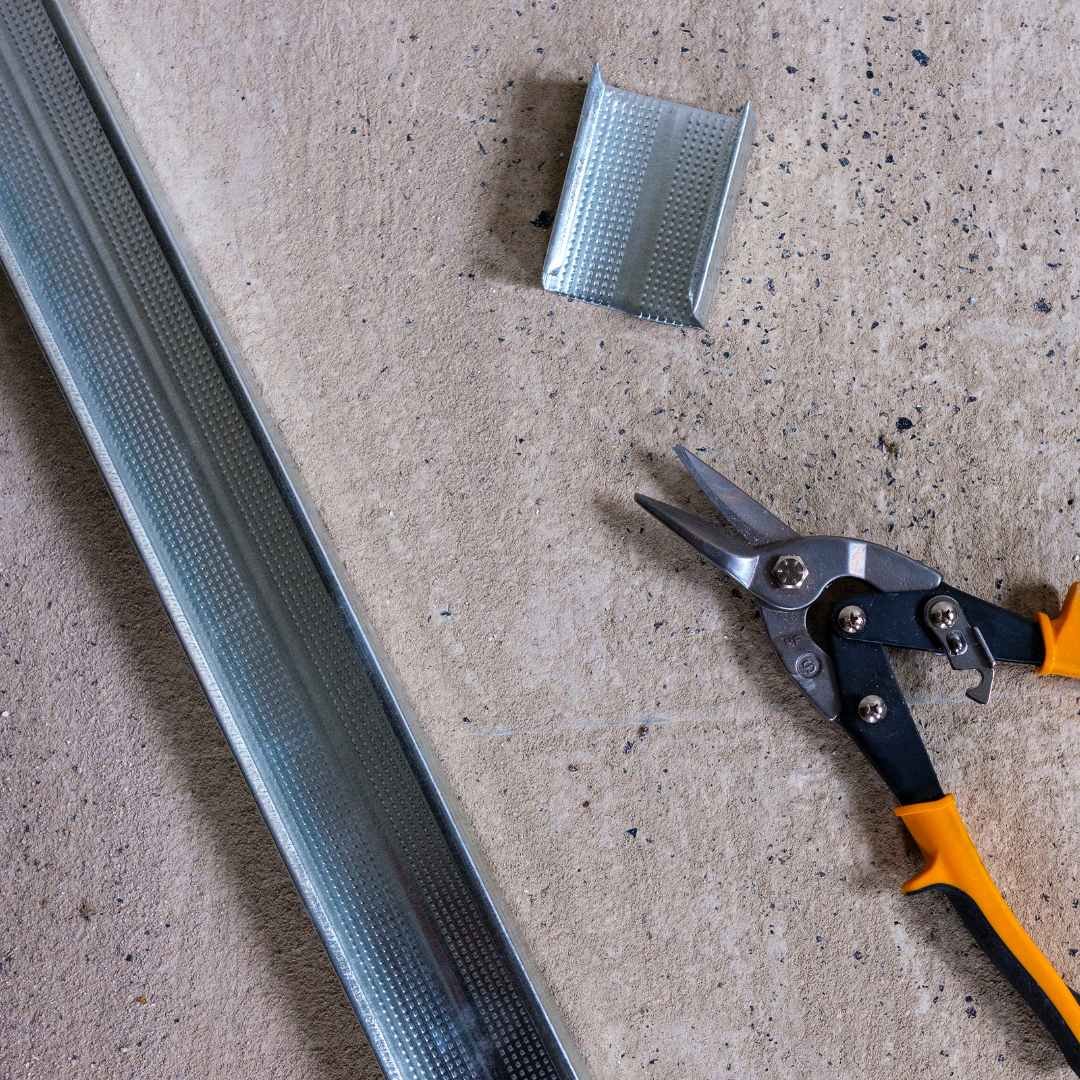
2. Measure and Cut
Measure the length of your gutters and cut the gutter guards to the appropriate size using a hacksaw or tin snips.
-
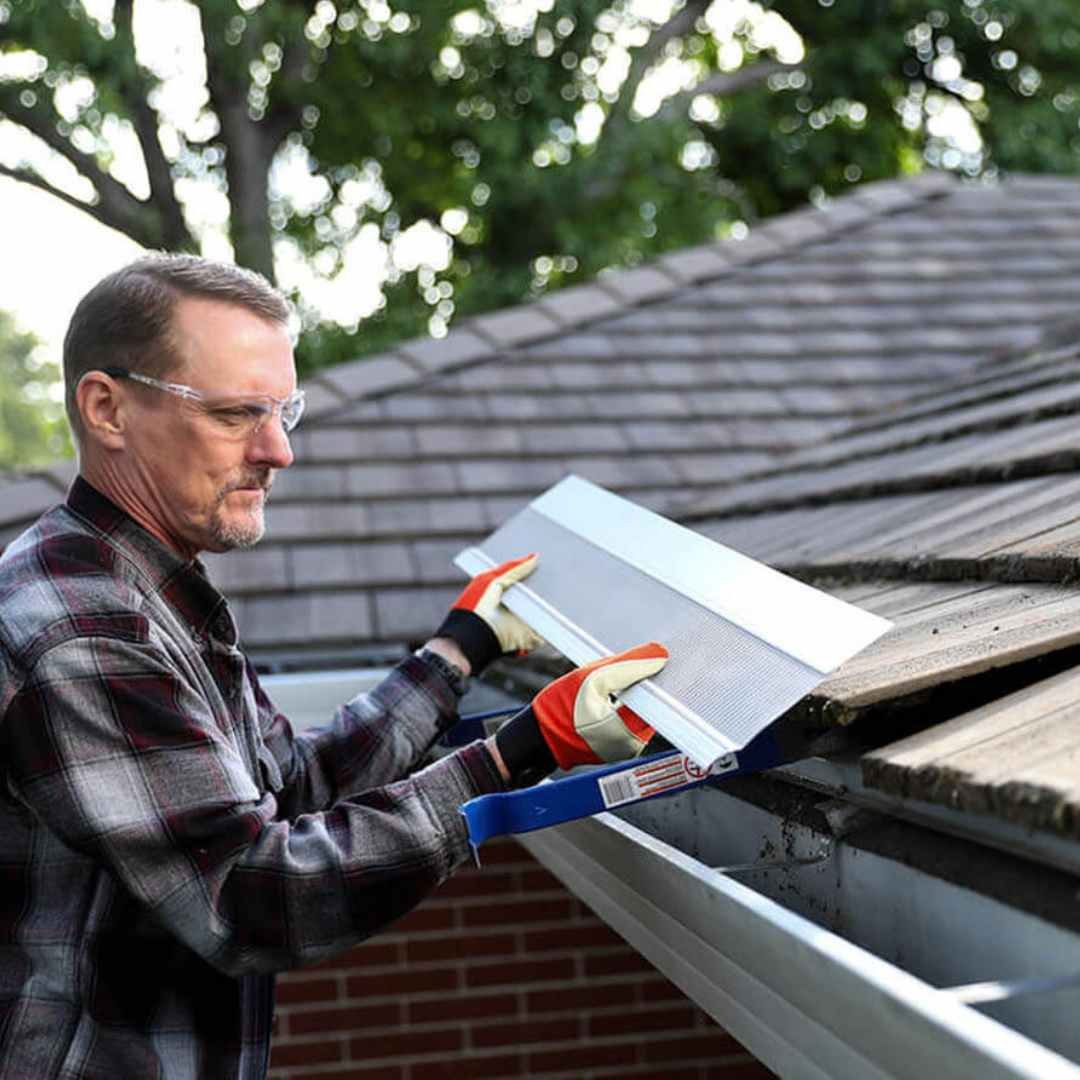
3. Install the Guards
Slide the gutter guards under the first row of shingles, making sure they fit securely. Use screws or clips to secure the guards in place.
Tips and Tricks for a Successful Gutter Guard Installation
Consider installing the gutter guards on a warm day, as the material will be more flexible and easier to work with.
Use a level to ensure that the gutter guards are installed evenly and in proper alignment.
Follow the manufacturer's instructions and recommendations for installation.
Check the gutter hanger for strength and reinforce if necessary.
Common Mistakes to Avoid During Gutter Guard Installation
Failing to clean the gutters before installation, leading to poor adhesion and functionality of the gutter guards.
Using incorrect measurements, resulting in ill-fitting gutter guards that may not provide adequate protection.
Overlapping the gutter guards, which can impede water flow and lead to accumulation and clogging.
Breaching the roof underlayment that could cause a leak or void a roof warranty.
Benefits of Hiring Gutter Guard Installation Experts
While DIY installation is an option, hiring a professional offers several advantages:
Professional Installation vs. DIY
Professional installation ensures that the gutter guards don't leak, are properly installed, and maximize their effectiveness and longevity. Pros have the knowledge, experience, and tools to tackle any installation challenges while reducing the downsides of a faulty installation.
Why Hiring an Expert is Worth the Investment
Investing in professional installation saves you time and eliminates the guesswork involved in DIY installation. Experts can recommend the best gutter guards for your specific needs and provide maintenance tips to keep them performing optimally. Choosing the right gutter protection ensures your peace of mind.
How Often Should Gutter Guards be Cleaned?
The frequency of gutter maintenance varies depending on the surrounding environment. In general, it is recommended to inspect and clean them at least once or twice a year.
Maintaining and Cleaning Gutter Guards
While gutter guards reduce the frequency of gutter cleaning, they still require regular maintenance to ensure optimal performance:
Essential Gutter Guard Maintenance Tips
Inspect the gutter guards and attachment accessories regularly to check for any signs of damage or debris accumulation.
Remove any debris that may be trapped on the surface of the gutter guards using a brush or hose.
Trim overhanging tree branches to minimize the amount of falling leaves and debris.





